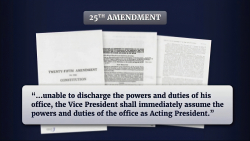The UK’s new defense strategy emphasizes deterrence and NATO leadership, pledging major investments in nuclear-powered submarines, emerging technologies, and readiness to counter threats from Russia, China, and cyber warfare.
It wouldn’t be remotely unfair to suggest that the Royal Navy hasn’t ruled the waves in a very long time, and likely will never again. Yet, this week, UK Prime Minister Keir Starmer unveiled a long-awaited 130-page 2025 Strategic Defense Review (SDR), which, among other new programs, calls for a dozen nuclear-powered fast attack submarines to help defend British interests, serve as force projection around the world, and support NATO efforts.
A year ago, when the Labour government was elected to power after a decade in the wilderness, there was speculation that London would retreat from the world stage, possibly even shirk its NATO commitments, and simply reduce spending. Instead, it spends even more on defense than the previous Conservative government, which held power for over a decade.
While speaking from Clydeside in Scotland on Monday, Starmer vowed to invest $20.3 billion in the UK’s nuclear weapons program to address Russia and China’s dual threat. That included building a full dozen new nuclear-powered attack submarines. The PM vowed to make the UK “war-ready” within two years.
“When we set the terms of reference for this review, we set it on the premise that we will be spending 2.5 percent of GDP on our defense. Since then, we’ve put the date on that, 2027 to 2028, the highest sustained increase in defense spending since the Cold War,” Starmer said from the home to the UK’s Trident submarine nuclear deterrent force.
Instead of appeasement, the UK is seeking a deterrence policy.
“We are moving to war-fighting readiness as the central purpose of our armed forces. When states are directly threatening us with advanced military forces, the most effective way to deter them is to be ready, and frankly, to show them that we’re ready to deliver peace through strength,” Starmer added.
The UK’s Relationship with NATO
The UK may maintain its “special relationship” with the United States, but London is taking a very different direction from that of Washington. The Trump administration remains overly committed to its “America First” agenda, but the UK acknowledges that retreating from the world stage isn’t the answer.
The strategic review noted that the threat the UK and Europe face could be the most serious and the least “predictable” since the Cold War.
“The UK faces war in Europe, growing Russian aggression, new nuclear risks, and daily cyber-attacks at home. Our adversaries are working more in alliance, while technology is changing how war is fought. Drones now kill more people than traditional artillery in the war in Ukraine, and whoever gets new technology into the hands of their Armed Forces the quickest will have the advantage,” the review explained.
“As the UK steps up to take on more responsibility for European security, we must have a “NATO first” defence policy and lead within the Alliance. The UK will become the leading edge of innovation in NATO,” the SDR added.
AUKUS Submarines
Key to the SDR is the construction of 12 next-generation SSN-AUKUS nuclear-powered submarines, which are being jointly developed by Australia, the UK, and the US as part of the trilateral AUKUS security partnership arrangement.
Australia has already committed to spending billions to support the development of future nuclear-powered submarines. That investment will fund the construction of new shipyards, factories, and docks domestically and in the UK. Canberra pledged $3.1 billion in 2024 to help clear bottlenecks at the Rolls-Royce nuclear reactor production line.
London and Canberra aren’t shy about expressing their concern that Washington could scuttle the trilateral program. President Donald Trump had expressed concerns about the effort during its development in his first term. Trump also continues to support the isolationist America First agenda.
The submarines are still at least a decade away, but concern remains about how effectively they could move forward without US involvement.
Beyond the AUKUS submarine, the SDR called for constructing at least six new ordnance facilities and adopting a hybrid Royal Navy that employs unmanned systems, including drones, alongside crewed warships, submarines, and aircraft.
Starmer has vowed that the Ministry of Defence (MoD) budget will reach three percent of GDP by 2024.
About the Author: Peter Suciu
Peter Suciu has contributed over 3,200 published pieces to more than four dozen magazines and websites over a thirty-year career in journalism. He regularly writes about military hardware, firearms history, cybersecurity, politics, and international affairs. Peter is also a Contributing Writer for Forbes and Clearance Jobs. He is based in Michigan. You can follow him on Twitter: @PeterSuciu. You can email the author: [email protected].
Image Credit: Shutterstock/Sean Aidan Calderbank.
















